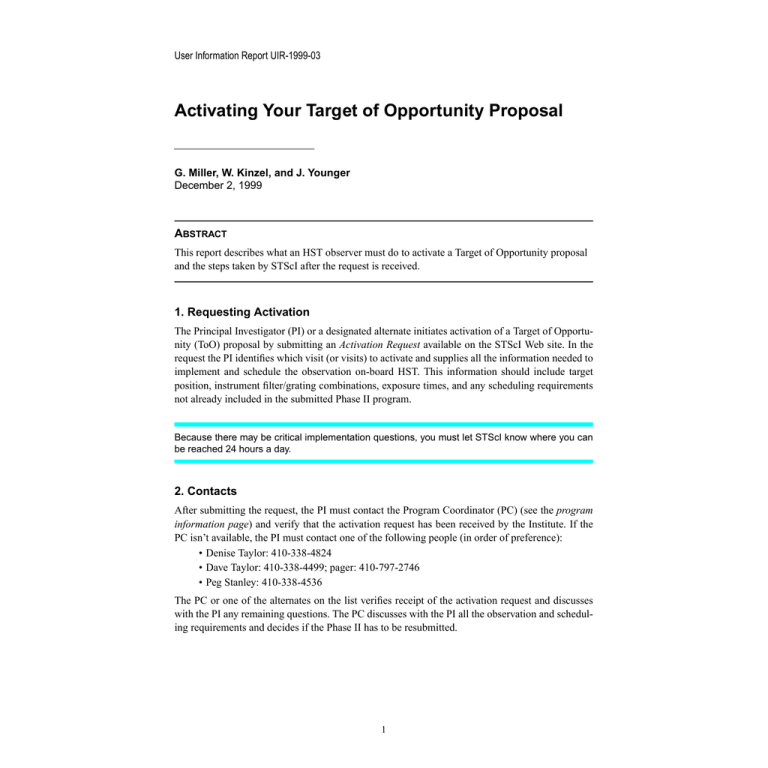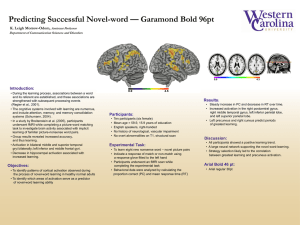Activating Your Target of Opportunity Proposal A
advertisement

User Information Report UIR-1999-03 Activating Your Target of Opportunity Proposal G. Miller, W. Kinzel, and J. Younger December 2, 1999 ABSTRACT This report describes what an HST observer must do to activate a Target of Opportunity proposal and the steps taken by STScI after the request is received. 1. Requesting Activation The Principal Investigator (PI) or a designated alternate initiates activation of a Target of Opportunity (ToO) proposal by submitting an Activation Request available on the STScI Web site. In the request the PI identifies which visit (or visits) to activate and supplies all the information needed to implement and schedule the observation on-board HST. This information should include target position, instrument filter/grating combinations, exposure times, and any scheduling requirements not already included in the submitted Phase II program. Because there may be critical implementation questions, you must let STScI know where you can be reached 24 hours a day. 2. Contacts After submitting the request, the PI must contact the Program Coordinator (PC) (see the program information page) and verify that the activation request has been received by the Institute. If the PC isn’t available, the PI must contact one of the following people (in order of preference): • Denise Taylor: 410-338-4824 • Dave Taylor: 410-338-4499; pager: 410-797-2746 • Peg Stanley: 410-338-4536 The PC or one of the alternates on the list verifies receipt of the activation request and discusses with the PI any remaining questions. The PC discusses with the PI all the observation and scheduling requirements and decides if the Phase II has to be resubmitted. 1 User Information Report UIR-1999-03 3. Evaluation and Implementation STScI evaluates the effect of the ToO's interruption on the HST schedule and how well the observations of this event meet the approved science goals. The Director’s Office then makes the final decision whether to activate a ToO. The PI resubmits the Phase II (if necessary) and the observations are prepared for scheduling. In the meantime the CS, the PC and Short Term Planning conduct a review of the proposal to assure the safety of the observations, to verify that the program complies with the observing time allocation and to identify execution opportunities. Director’s Office Approval Even though the activation request has been submitted and the observations are ready, the Director’s Office may not approve the request for activation, usually due to the adverse effect on other HST observations. If the activation request is not approved, you may re-request it at a later time, until the end of the observing cycle when unexecuted ToO observations are withdrawn. 4. Visits Requiring Rapid Processing (fewer than 7 days) The PI already should have worked out any implementation questions with the PC and CS and be prepared to resubmit the Phase II. The shorter the required response time, the less time there is to make changes to the program. Consequently, any changes made to the program in the activation request may result in STScI being unable to schedule the observations. 2

